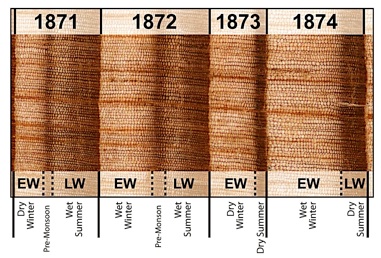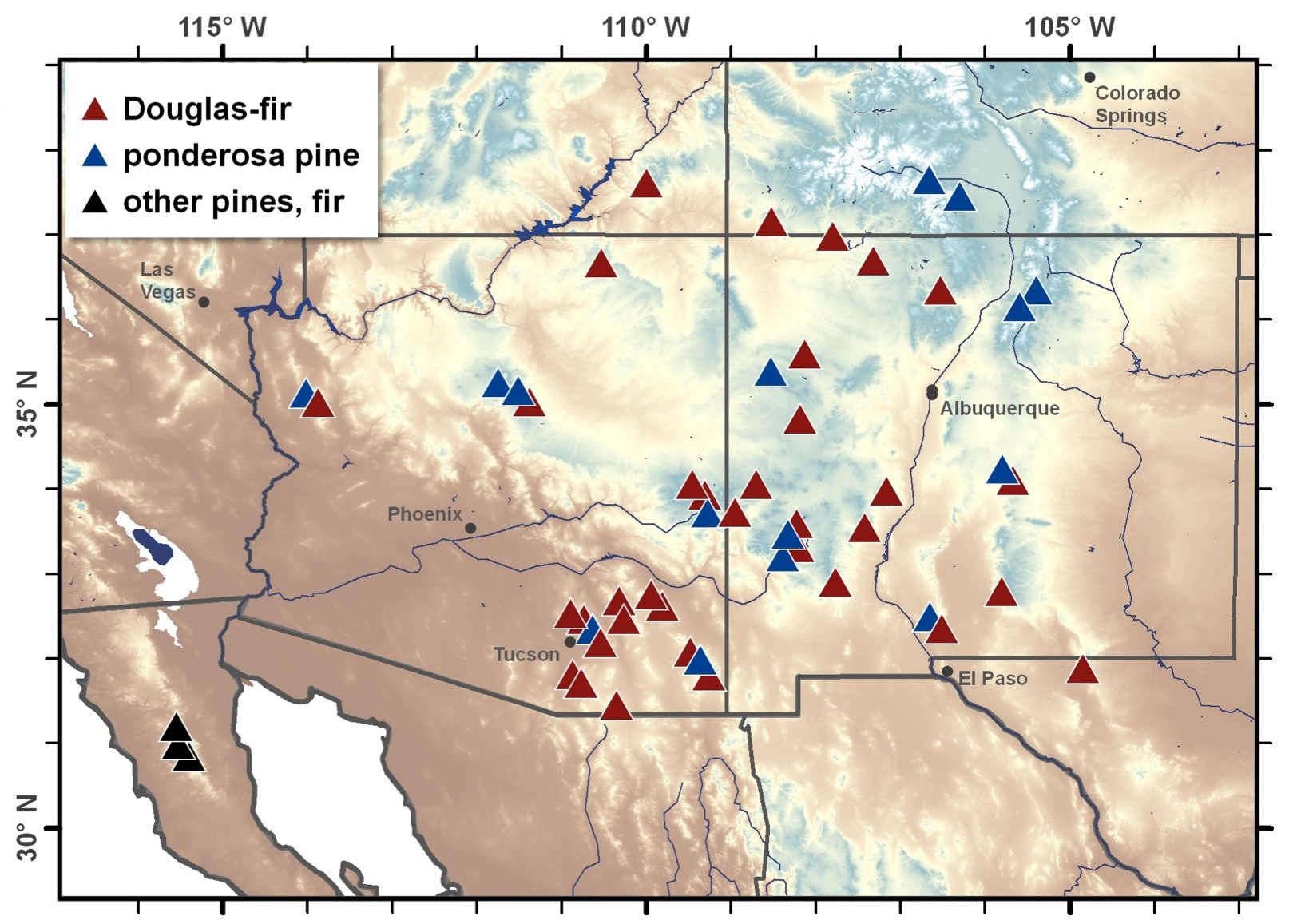Investigating North American Monsoon Variability in the Southwestern USA using Instrumental and Tree-Ring Data
| Background |
| Documents & Data |
 |
|||
| Background & Project Overview | |||
The North American monsoon is central to the climate of the American Southwest. Monsoon variability, which is particularly dramatic over Arizona and New Mexico, has a heavy influence on both ecosystems and society. In the coming decades, the southwest will likely experience drier winters, but what about the fate of the summer monsoon? As modelers refine their projections, it is imperative that we understand how the monsoon varied in the past under natural, non-anthropogenic climate forcing. To study the recent paleoclimatic history of the monsoon, we’re once again turning to tree rings, focusing our analysis around the dark-colored latewood that forms during the summer when monsoon rains influence tree growth.
In most conifers, annual growth rings are comprised of a couplet of light-colored “earlywood” that is produced in the spring and the dark-colored “latewood” produced in the summer (see photo below). For species such as Douglas-fir and ponderosa pine, the anatomical transition from earlywood to latewood is sharp and clear. In the Southwest, where our annual precipitation is divided between the winter and summer seasons, the width of these sub-annual components is proportional to moisture variability in the respective season. Therefore, wet winters produce wide earlywood bands while wet monsoons produce wide latewood bands. Conversely, dry winters produce narrow earlywood and dry monsoons produce narrow latewood.
For the most part, the monsoon is independent from the region’s winter precipitation regime. We actually see all combinations of earlywood (EW) and latewood (LW) width, as illustrated by the photo above. By measuring earlywood- and latewood-width separately, we can produce long tree-ring chronologies that reflect this seasonally-independent moisture variability. More importantly, latewood chronologies provide insight on the recent paleoclimatic history of the monsoon. We have, for the first time, measured earlywood and latewood width of archived tree-ring specimens from around the Southwest. We also returned to the original sampling sites to update the chronologies to the twenty-first century. Complimentary to research being conducted by our colleagues in Mexico, we have developed the first systematic network of monsoon-sensitive latewood chronologies for the southwestern U.S. We are now using this network to systematically reconstruct monsoon variability across the region.
Our work provides 400 to 500 years of perspective on the natural range of monsoon drought variability from the U.S.-Mexico border north to the Four Corners. Through comparison of winter and summer precipitation, we have documented the long-term phase relationship between drought and wetness during the two seasons. The reconstructions are also being used to evaluate the North American monsoon’s long-term relationship to climate dynamics of the ocean and atmosphere. The high-resolution reconstructions provide a benchmark for other paleoclimate studies in the region and should also be useful for assessing regional climate models’ ability to reproduce the full range of natural monsoon variability. Partnering with stakeholders from the region, we aim to “co-produce” and disseminate information that is actually useful within the resource management context. Our project includes a strong educational mentoring component that promotes graduate and undergraduate student involvement. Our research group includes Professors Connie Woodhouse, David Meko, Ramzi Touchan, Steve Leavitt, Christopher Castro, and many graduate and undergraduate student researchers. |
 |


 Triangles on the map above illustrate the monsoon-sensitive tree-ring
latewood chronologies developed by our research group in the southwestern United States and Baja Mexico.
Triangles on the map above illustrate the monsoon-sensitive tree-ring
latewood chronologies developed by our research group in the southwestern United States and Baja Mexico.